Expeditions: Bazaruto Archipelago
As part of her dissertation work, PhD candidate Linda Eggertsen led an expedition to Bazaruto Archipelago in
Mozambique during March-April. The Bazaruto Archipelago is situated along the Dune Coast in Mozambique and
characterised by large sand dunes. The calm waters in the vast bay consists of a mix of sandbanks, channels and
extensive seagrass beds. The reefs are some of the most biodiverse and pristine in Eastern Africa. A rich reef fish
fauna and more than 99 species of scleratinian corals have been recorded here. Most of the reefs are protected
from fishing since 1971 when the Parque Nacional de Bazaruto (PNAB) was created to protect the resident
population of dugongs in the area. Due to the recent civil war and lack of infrastructure, little marine research has
been conducted here.
The expedition was executed in collaboration with Stockholm University, Sweden, and members from the LECAR
team (Linda Eggertsen, Whitney Goodell and César Cordeiro) and Stockholm University (MSc candidate Rasmus
Gustafsson) spent a month studying the reefs, seagrass beds and mangroves around the Bazaruto Archipelago.
Linda’s Swedish supervisor, Dr. Charlotte Berkström also joined the expedition for a few weeks, and together she
and Linda visited the Inhaca marine research station outside Maputo Bay in the south of Mozambique.
This years’ Bazaruto expedition included monitoring of the fish assemblage in mangroves, seagrass beds and on
the reefs, a study on feeding behaviour of three species of parrotfish; the seagrass parrotfish Leptoscarus
vaigiensis, the blue barred parrotfish Scarus ghobban and the redlip parrotfish Scarus rubroviolaceus. It also
included a MSc project about modelling the 3D structure of reefs to study reef structure and landscape arrangement
impact on herbivory and fish assemblage (Rasmus Gustafsson, Stockholm University), and a project on local
ecological knowledge of local fishermen (Stockholm University). Field work was done in close collaboration and
with support by The Sanctuary, a private protected area located in the south of the archipelago, and the PNAB.
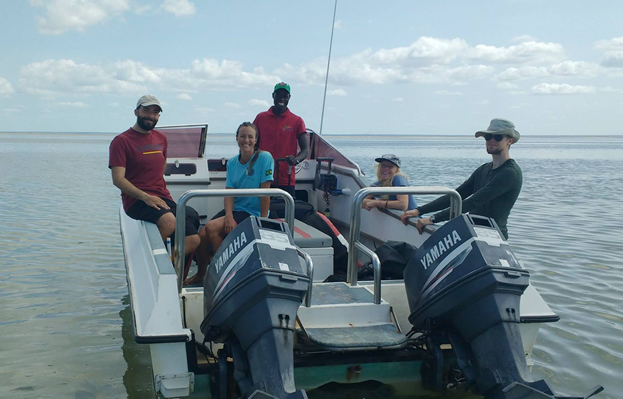
Getting ready for fieldwork in the Sanctuary with our skipper Orlando. São Sebastião/Queweni Peninsula.
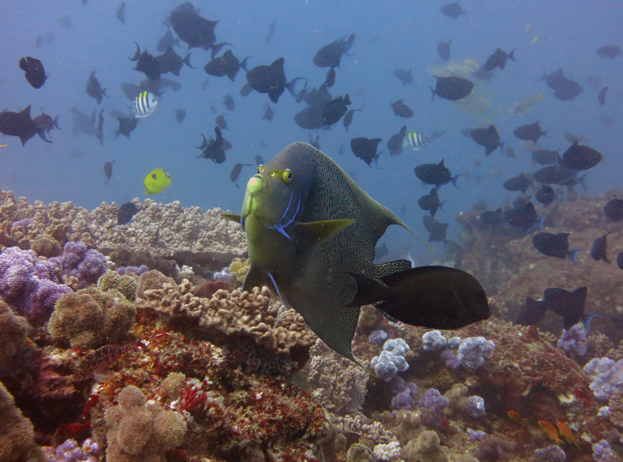
The reef environment at Amphitheater Reef, São Sebastião/Queweni.
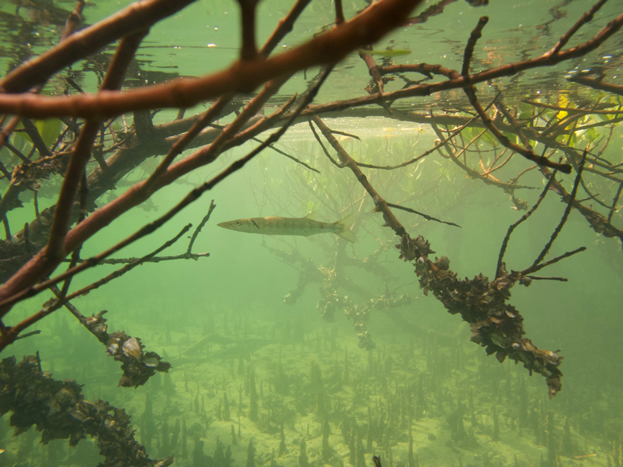
A juvenile pickhandle barracuda (Sphyraena jello) in the mangroves in São Sebastião/Queweni.
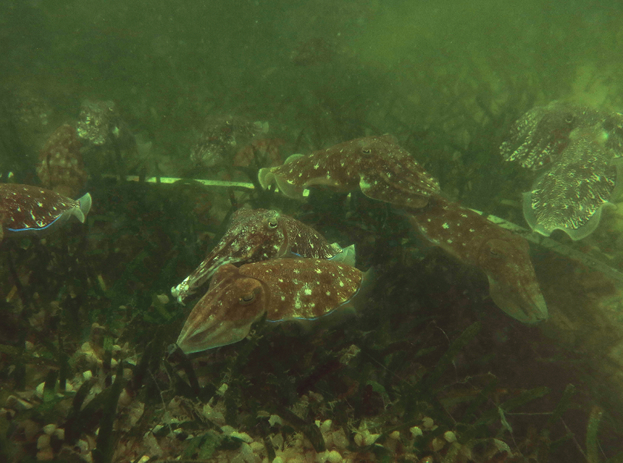
Cuttlefish spawning aggregation in one of the marine protected areas in The Sanctuary.
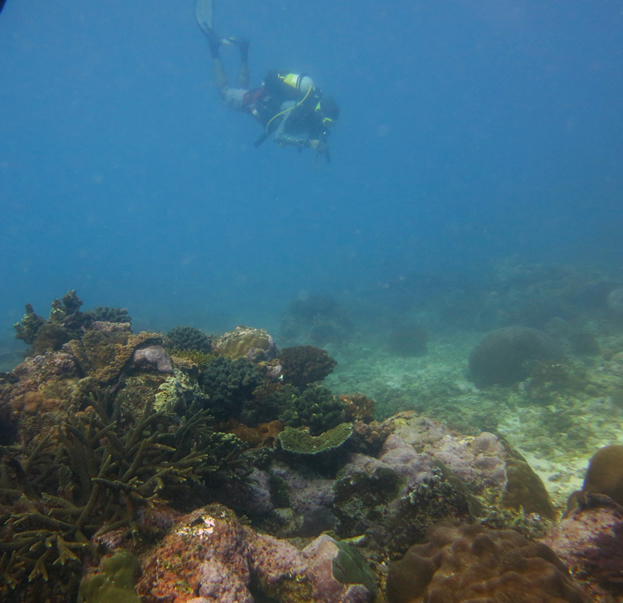
Dr. César Cordeiro collecting data for 3D mapping at the backreef of 2 Mile reef. This part of the reef has a very high
abundance of especially branching corals.
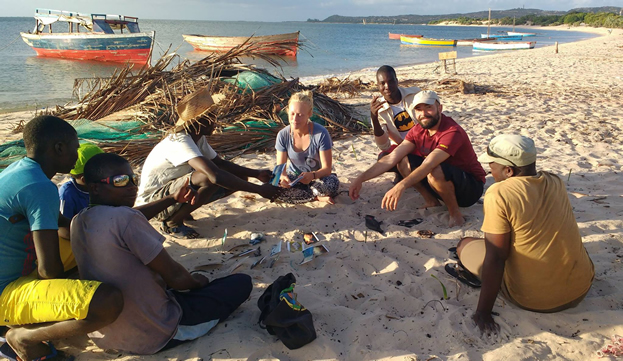
LEK interview with fishermen at the Bazaruto Island. The community here is extremely dependent on fishing since
the soil quality is very poor.
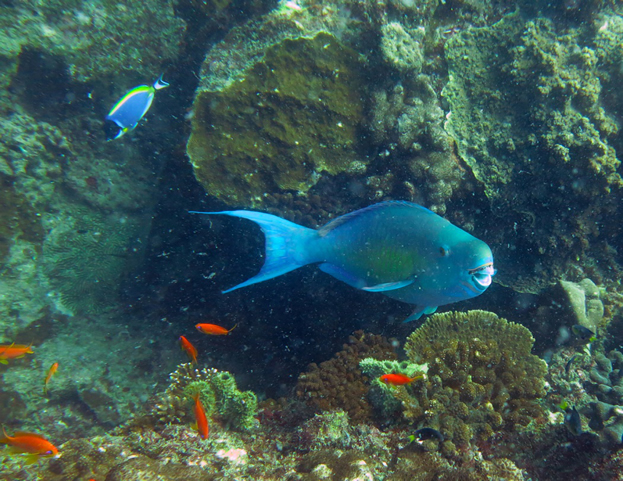
A redlip parrotfish, Scarus rubroviolaceus on 2 Mile reef.
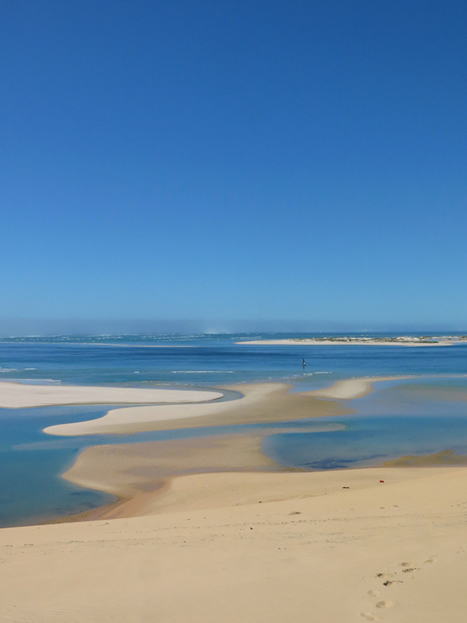
Sand dunes dominates the coastal features in the Bazaruto Archipelago.
Written by Linda Eggertsen and César Cordeiro at 6/2017. |

















